This work is mainly focused on the series of dynamical analysis of tritrophic food chain model with Sokol-Howell functional response, incorporating the multiple gestation time delays for more realistic formulation. Basic properties of the proposed model are studied with the help of boundedness, stability analysis, and Hopf-bifurcation theory. By choosing the fixed parameter set and varying the value of time delay, the stability of the model has been studied. There is a critical value for delay parameter. Steady state is stable when the value of delay is less than the critical value and further increase the value of delay beyond the critical value makes the system oscillatory through Hopf-bifurcation. Whereas, another delay parameter has a stabilizing effect on the system dynamics. Chaotic dynamics has been explored in the model with the help of phase portrait and sensitivity on initial condition test. Numerical simulations are performed to validate the effectiveness of the derived theoretical results and to explore the various dynamical structures such as Hopf-bifurcation, periodic solutions and chaotic dynamics.
1.
Introduction
Crude oil is perhaps the most important given its influential role in the world economy relative to other commodities, particularly in terms of causing recessions (Hamilton, 1983, 2008, 2009, 2013). Therefore, since 1970s, the oil price fluctuates crisis have spurred the interest of academics, policy makers and practitioners in studying the relationship between oil price and economic activity. The frequent occurrence of literatures indicates that the study of oil price has important practical value.
The research contents of existing literatures mainly include the measurement, influencing factors and driving factors of crude oil price. First, the oil market is very concerned about what happens to the price of oil, and the price prediction, volatility and risk formation have become the focus of research (e.g. Morana, 2001; Wang et al., 2012; Krehbiel and Adkins, 2005). In addition, the question of what factors determine oil prices has attracted considerable concerns. The factors that influence oil prices include macroeconomic and monetary variables, such as economic growth, interest rates, and exchange rates, etc. Following the seminal work of Hamilton (1983), numerous literature studies also have investigated the effects of oil and its prices on macroeconomic indicators (e.g., see Kang and Ratti, 2013a, b; Antonakakis et al., 2014 for detailed reviews), however, results are still inconclusive.
With the multiple properties of crude oil market, the research on oil price has been greatly enriched. In recent years, the literature presents complexity in terms of research methods and research conclusions. In terms of methods, the original linear model is replaced by nonlinear model, static analysis is changed to dynamic analysis, univariate analysis is changed to big data analysis, and local research is changed to global research. As the financialization of oil commodity, the structure of the oil markets has changed and the oil markets become more and more similar to stock markets. There have been many emerging studies on the empirical link between oil prices and macroeconomic fundamentals. In terms of research conclusions, the latest literature gives more accurate conclusions and also obtains the opposite views from previous studies. Oil prices have risen exponentially since 2002, leading to fluctuations in international markets. Increases in oil prices lead to increases in the cost of production in many sectors; this might reduce production and increase unemployment while also resulting in inflation. Therefore, it is of great significance for this paper to systematize the literatures on crude oil price.
Our study contributes to the ongoing literature in the following aspects. Through comprehensive review of the literature on crude oil prices, it is found that the uncertainty of economic activity has agammaavated the fluctuation of crude oil prices. Factors from supply side and demand side are main drivers of movements of crude oil prices, and investor sentiment gradually becomes an important factor affecting the expected level of crude oil prices. Economic activities and financial stability are influenced by shocks of crude oil prices, meanwhile, many studies confirm the asymmetric effects. However, due to changes in the external environment, more complex nonlinear time-varying features are exhibited. In addition, Text mining technology and artificial intelligence technology provides new and effective methods for forecasting the trend of crude oil prices and conducting risk measurement in crude oil market.
The remainder of the paper is organized as follows. In the next section, we review static analysis in crude oil markets, included the forecasting of oil price, the measurement of oil price volatility, and oil price risk. The drive factors and impacts of oil price are provided in Section 3 and Section 4. Section 5 presents our conclusions.
2.
Static analysis in crude oil markets
2.1. The forecasting of oil price
Oil price prediction has been a common research theme in the last decades. For the forecasting of oil price, it is of paramount importance to determine the variables that drives the oil market to properly model. In recent years, researchers report success by expanding the range of predictive variables and there exist a plethora number of studies on forecasting the prices of crude oil. Some approaches of oil price prediction are developed, such as, a semiparametric approach to short-term oil price forecasting (Morana, 2001), a hydrid artificial intelligence system framework by integrating artificial neural networks and rule-based expert system with web-based text mining techniques (Wang et al., 2004), and a support vector machine method (Xie et al., 2006).As Shrestha (2014) notes, one can expect price discovery to occur primarily in the futures market, because futures prices respond to new information faster than spot prices. It is believed that futures market movements predict spot market movement for oil (e.g. Baumeister and Kilian, 2014, 2017; Baumeister et al., 2014, 2017).
Moreover, recent works in the literature advocate in favor of economic policy uncertainly (EPU) by Baker et al. (2013) driving oil price. Against this backdrop, Bekiros et al. (2015) indicate that information on economic policy uncertainty does matter in predicting the change in oil price. Yin (2015) investigates mean and volatility spillovers between the EPU index and oil returns and the underlying drive for the time-varying correlation. Balcilar et al. (2017) also find that EPU and equity market uncertainty (EMU) have strong predictive power for oil returns over the entire distribution barring regions around the median, but for volatility. Moreover, crude oil price forecasting results are sensitive to the modeling sample interval selection, sample data frequency and sample structural breaks. Dong et al. (2019) show the linkage of economic policy uncertainty and oil return risks, and indicate the synchronicity of the change trend between them.
The correlation of oil prices can reveal the linkage trend of difference oil price changes. It is dynamic and uncertain, and contains more information than the price itself for understanding the oil price. There is hug literature devoting to the study of the dynamics of crude oil prices and their mutual relationship. A considerable portion of the literature focuses on the co-movement and convergence of oil prices at different regions (Weiner, 1991; Sauer, 1994; Caner and Hansen, 2001; Gülen, 1997, 1998; Bentzen, 2007). Hammoudeh et al. (2008) revealed the long-term volatility coherence between the WTI, Brent, and Maya benchmark oil prices via a cointegration analysis. Fattouh (2010) find the volatility difference between the WTI, Brent, and Maya benchmark oil prices. Reboredo (2011) presented the dependence structure between benchmark oil prices with the copula approach. These researches on the oil market have focused mainly on the static relationship between bivariate oil prices, ignoring the dynamic correlation of bivariate or multivariate oil prices. Liu et al. (2013) investigate the integration between China's and four major crude oil market with a threshold error correction model and find only unidirectional volatility spillover running form benchmark market to China's oil market. Jia et al. (2015) provide a novel perspective on multivariate dynamic correlations for studying the oil market by using an optimal wavelet analysis on the basis of grey correlation. Dai et al. (2016) apply principal component analysis and random matrix theory to investigate the correlation structure of the global crude oil market, and show that the global crude oil market has a varying distinct correlation structure.
2.2. The measurement of oil price volatility
The recent literature shows a growing interest in modeling and forecasting oil price volatility due to its impact on the global and regional economies (e.g. Wang et al., 2012; Rahman and Serletis, 2012). To detect the existence of oil price bubbles, many approaches have been proposed. The widespread tool used in the literature to analyze oil price volatility is GARCH-type models (e.g. Alizadeh et al., 2008; Fan et al., 2008; Agnolucci, 2009a; Kang et al., 2009; Cheong, 2009; Mohammadi and Su, 2010; Wei et al., 2010; Nomikos and Pouliasis, 2011). Zhang and Wang (2015) confirm the existence of oil price bubbles during 2003–2012 by investigating the regime switching processes of the fundamental prices and market trading prices of WTI crude oil. Similarly, Lammerding et al., (2013) combine the state-space model with Markov regime switching model to measure the bubbles in oil prices, and find solid evidence for the presence of bubbles. Zhang and Yao (2016) introduce the state space model into the D test approach to detect the time-varying super-exponential growth of oil price series for excluding the sample periods without bubbles; and indicate that oil price bubbles only exist during November 2001–July 2008.
Recently, Wang et al. (2016) have added the Binomial Markov switching multifractal (BMSM) model in a competition with GARCH-type models to forecast oil return volatility. They find that the BMSM model properly captures the stylized facts of multiscaling, long memory and structural breaks observed in oil price volatility. Lux et al. (2016) adopt the Markov-switching multifractal (MSM) model and a battery of generalized autoregressive conditional heteroscedasticity (GARCH)-type models to model and forecast oil price volatility. Wang and Wang (2016) establish a new predictive model ST-ERNN to forecast the crude oil prices as well as oil stock prices.
2.3. The measurement of oil price risk
Within oil market, implementing a risk measurement methodology based on the statistical theory is an importance issue. To the best of our knowledge, very few studies have focused on measuring the risk forecasts in the oil market despite the significant need and interest to manage energy price risks. Among the few studies on estimating VaR on energy market, Krehbiel and Adkins (2005) who analyzed the price risk in NYMEX energy Complex using an extreme value theory approach. From the existing literatures, one may find some recent works that focus on conventional risk management models in order to estimate the daily VaR number (Cabedo and Moya, 2003; Costello et al., 2008; Huang et al., 2008; Fan et al., 2008; Zhao and Xi, 2009). Marimoutou et al. (2009) model VaR for long and short trading positions in oil market by applying both unconditional and conditional EVT models to forecast Value and Risk. Huang et al., (2009) employ CAViaR model to forecasting oil price risk. Moreover, Youssef et al. (2015) adopt long memory processes heteroscedasticity, asymmetry and fat tails in the crude oil and gasoline market. Their findings show that taking into account for those conditions helps predicting VaR in the highly volatile energy market.
3.
Drive factors of oil price
Economic factors, geopolitical tensions, and uncertainty over supply and demand have been brought forth to explain these extreme movement in oil price. Some studies claim that sharp movements in fundamental oil supply and demand (Dvir and Rogoff 2010; Alquist et al., 2013), particularly the rapidly growing demand in emerging economies such as China, lead to strong oil price fluctuations (Hamilton, 2009; Kilian and Vigfusson, 2011; Baumeister and Peersman, 2013), whereas other argue that excessive speculation and arbitrage trading activities by index investors play an important role (Lombardi and Van Robay, 2011; Tang and Xiong, 2012; Singleton, 2013).
3.1. The role of supply in crude oil markets
On the margin, the stability of oil market greatly depends on the supply of Oil-producing countries. That is the barrels whose production responds to changes in demand. To seek causes of volatility on the cartel's side appears "understandable" to Fattouh (2007) in view of the OPCE's central position in the oil market. The members' ability to effectively cartelize the oil market is the object of ongoing discussion (e.g. Smith, 2005; Fattouh, 2007; Schmidbauer and Rösch, 2012). However, empirical findings on whether crude oil price movements are significantly triggered around OPEC meetings are ambiguous (see, for instance, Kaufmann et al., 2004; Smith, 2005; Brémond et al., 2012; Fattouh and Mahadeva, 2013; Liu et al., 2019).
However, regarding OPEC which is a cartel or not, and whether a coordination behavior among the numbers takes place to control production as a tool to put pressures on the oil price, the literature as a whole remains inconclusive. Colgan (2014) shows that economists have wrong idea about OPEC acting as a cartel; on the contrary, the organization has no power to manipulate oil price. Brémond et al. (2012) investigate whether production decisions of OPEC members are coordinated and therefore affect oil prices. The findings show that the influence of OPEC was strong only in periods after oil shocks, while the organization acts as price take most of the time since 1973. Following Dahl and Yücel (1991), Gülen (1996) examines whether the production decisions of OPEC members are coordinated and whether they impact on oil prices. Kisswani (2016) utilizes causality tests for OPEC production and oil prices to see any evidence of cartel behavior. Some findings are backed by the causality tests, where OPEC production does not Granger cause oil prices; rather, it is oil prices that Granger cause the organization production. Loutia et al. (2016) investigate the informational role of OPEC and its (potential) contribution to oil price formation. They find that the impact of OPEC's announcements on oil prices is more significant for production cut and maintain, and is different for WTI and Brent prices. Hosseini and Hamed (2016) show that excess supply by the oil exporting counties partly losing their revenues may lead to an early peak for the conventional oil, while reducing the prices.
3.2. The role of demand in crude oil markets
The large and growing empirical literature investigate the role of demand for oil prices (for example, Barsky and Kilian, 2004; Kilian 2009a; Kilian and Murphy 2012, 2014; Bodenstein et al., 2012; Lippi and Nobili 2012; Baumeister and Peersman 2013; Kilian and Hicks 2013; Kilian and Lee 2014; Liao et al., 2019). Changes in the oil demand-side cause price fluctuations, and makes finally makes oil price shocks transmit to the macroeconomy. Therefore, while oil exporting countries would experience an increase in production due to a demand push, oil importing countries would face a contraction (Edeltein and Kilian, 2008; Hamilton, 2011). Karsky and Kilian (2002) first suggested that one should allow for a 'reverse causality' from macroeconomic variable to oil prices. Subsequently, many empirical researches have showed that if the increase in the oil prices is driven by an increased demand for oil associated with fluctuations in global activity and not disruptions of supply capacity, economic activity may even be positively affected, at least in short run (Peersman and Robays, 2012; Aastveit, 2014). Aastveit et al. (2015) explore the role of demand form emerging and developed economies as drivers of the real price of oil. They find that demand from emerging economies is more than twice as important as demand from developed counties in accounting for the fluctuations in the real oil price and in oil production.
Some experts hold that the fundamentals (especially the strong oil demand in the advanced economies and emerging economies) drive the increasing surge of international oil prices (Hamilton, 2008, 2009; Kilian, 2009; Kilian and Hicks, 2013). The demand-side approach analyses the relationship between energy consumption, gross domestic product (GDP) and energy price in a tri-variate energy demand model (Asafu-Adjaye, 2000; Rafiq and Salim, 2011). Bloch et al. (2015) find negative own-price elasticity for each of coal, oil and their combination, suggesting that use of both fossil fuels with rising prices.
3.3. The role of investors in crude oil markets
According to the previous researches, the oil price trend in the long term is finally determined by oil supply and demand, while events and speculation activities can amplify the oil price volatility and increase instability of oil market. Oil prices have become more sensitive to the occurrence of oil-related events, such as wars, the release of OPEC production quota decisions, oil stock fluctuations and extreme weather (Blair and Rezek, 2008; Demirer and Kutan, 2010; Hayat and Narayan, 2010; Zhang el at., 2009). Moreover, oil market analysts tend to incorporate information about these emergency events into their judgments and predictions of oil price changes (Hamilton, 2009).
The literature on the effects that oil-related events have on oil prices has focused on two primary issues: production announcements of OPEC conferences and wars (e.g. Demirer and Kutan, 2010; Draper, 1984; Feskaraki and Hoffman, 1985; Gulen, 1996; Horan et al., 2005; Zhang et al., 2009; Fan and Xu, 2011). Kaufmann et al. (2004) indicates that OPEC has considerable power over prices, via decisions about OPEC quotas, production and operable capacity. Wirl and Kujundzic (2004) compare the changes in crude oil prices before and after the OPEC announcements, and conclude that OPEC's impacts have weakened. Lin and Tamvakis (2010) use event study methodology to examine the effects of OPEC announcements on major crudes, and several other heavy and light grade types of oil, and find differentiation in the magnitude and significance of the market responses to OPEC's quota decisions. Schmidbauer and Rosch (2012) investigate the impact of different OPEC announcements on the expectation and the volatility of daily oil price changes. Ji and Guo (2015) investigate the information transmission between oil price changes and Internet concerns for three different types of oil-related events.
In addition, human behaviour traces on the Web can provide good insights, enabling a better understanding of the market's movements in oil. Recently, the studies of behavior factors in stock markets therefore inspire exploration of behavior factors in oil market. So far, it seems that just a little literature regard behavioral factors in explaining oil price movements (e.g., Rao and Srivastava, 2013; Guo and Ji, 2013; Basistha et al., 2015; Ji and Guo, 2015a, Ji and Guo, 2015b; Li et al., 2015; Dowling et al., 2016; Ji and Fan, 2016; Campos et al., 2017; Qadan and Nama, 2018). Rao and Srivastava (2013) find strong correlation of search volume index from Google (GSVI) and oil, and the GSVI and Twitter investor behavior are significant in predicting changes in the financial features of oil; Afkhami et al. (2017) utilize Google search data to measure attention in energy markets and create proxies that best represent investor attention for energy price volatility prediction; Qadan and Nama (2018) indicate that investor sentiment impacts oil prices and volatility significantly, which shows evidence that behavioral factors are powerful for oil price prediction; In line, Basistha et al. (2015), Li et al. (2015), Ji and Guo, 2015a, Ji and Guo, 2015b, Campos et al. (2017) also show the internet search activity or internet concern is useful to improve prediction of oil markets, and they demonstrate the positive and significant interaction between internet search activity and oil markets. Overall, the literature aforementioned has not provided consistent conclusions on the links between behavioral factors and oil markets. And most of these studies indicate that investor attention has become a newly emerging behavioral factor for oil prices investigation (e.g., Rao and Srivastava, 2013; Ji and Guo, 2015a, Ji and Guo, 2015b; Li et al., 2015; Basistha et al., 2015; Han et al., 2017)
4.
The impacts of oil price
The important role of oil in the world has motivated the research on the economic and financial consequences caused by oil price changes. The analysis of the impacts of oil price shock has long been the subject of a vast and growing literature.
4.1. The economic impacts of oil price shock
Most of these studies have been focused in macroeconomic agammaegate data, such as output, inflation, unemployment and GDP growth (Hamilton, 1983, 1996, 2003, 2011; Gisser and Goodwin, 1986; Hooker, 1996; Jiménez-Rodríguez and Sánchez, 2005, 2009; Baumeister et al., 2010; Elder and Serletis, 2010; Kilian and Vigfusson, 2011; Aguiar-Conraria and Soares, 2011; Bhar and Mallik, 2013).
The effects of an increase in oil prices on real GDP growth are found to differ substantially from those of an oil price decrease, providing evidence against the linear approach that assumes that oil prices have symmetric effects on the real economy (e.g. Mork, 1989; Mork et al., 1994). Also, it is found that oil increases had more dramatic macroeconomic after a long period of price stability (see Lee et al., 1995; Hamilton, 1999, 2003; Jiménez-Rodríguez and Sánchez, 2005). However, there is a limited number of authors who have formally tested for the existence of non-linearity in the relationship between oil prices and real GDP growth (e.g. Hamilton, 2003; Zhang, 2008; Jiménez-Rodríguez, 2009; Kilian, 2008; Narayan et al., 2014; Youssef et al., 2015; Katircioglu, 2015). Recent studies that use new methodologies to test for asymmetries relationship between economic activity and oil prices in US data have cast some doubts (Kilian and Vigfusson, 2011a; Herretra et al., 2015). Herretra et al. (2015) find very little support for the hypothesis that response of industrial production to oil price increase and decrease is asymmetric.
Gomez-Loscos et al. (2011) found that oil price movements did not have a significant impact on GDP and/or CPI inflation. Also, there was non-linear relationship between oil prices and macroeconomic variables, such as CPI and GDP. Ashley and Tsang (2013) found that oil price growth rates had a statistically significant effect on future output growth, which continued for more than four years. Gomez-Loscos et al. (2012) found that there were long-term multipliers, and the impact of oil price movements on output and inflation was highest in 1970. However, this effect lasted until the end of the 1990s although in 2000, the impact on output and especially on inflation was high. Cavalcanti and Jalles (2013) found that oil price increases had a negative impact on economic growth and a positive impact on inflation in the US. However, the importance of these impacts lessened over time.
In addition, Papapetrou's (2001) study on the dynamic relationship between oil price movements, stock market, economic activity, and employment in Greece found that the price of oil significantly affects economic activity and employment. Cunado and Gracia (2003) found short-run impacts on inflation while oil prices exhibited opposite impacts on production growth rates in the short run. Jiménez-Rodríguez and Sánchez's (2005) findings revealed that the effect of oil prices on real GDP was non-linear, but oil price increases had a greater effect on economic growth than oil price decreases. According to Lardic and Mignon's (2006) estimation results, there was an asymmetric co-integration between the price of oil and GDP in the 12 European countries; however, there was no standard co-integration between them. Ewing and Thompson (2007) found there was a positive relationship between changes in the price of oil and unemployment. In a study by Alvarez et al. (2009), the authors found that the effect of oil price changes on inflation was limited and the effect of oil price changes on inflation was higher in Spain than in the Euro zone. Using the efficiency wage model of Carruth et al. (1998) and Dogrul and Soytas (2010), the researchers found oil price movements and interest rate movements had negative and insignificant effects on unemployment. Chang et al. (2011) found oil price increases had an increasing and positive impact on GDP for oil-exporting countries; and there was an ambiguous impact of oil price movements on faster GDP growth in large economies.
4.2. The financial impacts of oil price
By summarizing the documents, we can find the four most important financial impacts of oil price fluctuation that scholars pay attention to: the US dollar (USD) exchange rate, the stock market, gold, and the crude oil futures market.
There are an abundant number of studies exploring the relationship between oil prices and exchange rates. Theoretical analysis of the relationship between oil prices and exchange rates started with the work of Krugman (1980) and Golub (1983). They argue that an increase in oil prices leads to dollar appreciation in the short run and depreciation in the long run. Previous empirical studies show that oil prices and US dollar exchange rates are highly correlated in mean and volatility (Cuaresma and Breitenfellner, 2008; Narayan et al., 2008; Zhang et al., 2008; Lizardo and Mollick, 2010; Wuet et al., 2012; Ahmad and Hernandez, 2013; Aloui et al., 2013; Brahmasrene, 2014; Khalifa et al., 2015; Atems et al., 2015; Jammazi et al., 2015; Aloui and Jammazi, 2015; Basher et al., 2016; Jiang and Gu, 2016; Li et al., 2016; Sun et al., 2017; Singh et al., 2018). More interestingly, although different data sets are used in various studies, the results are basically consistent. In addition, Ding and Vo (2012) and Mensi et al. (2015) find recent breaks in the relationship between oil prices and exchange rates. Nusair and Olson (2019) find that oil shocks have asymmetrical effects on exchange rates and this impact depends upon the current market conditions.
Several studies have examined the relationship between crude oil prices and agammaegate stock returns. However, there is no consensus on whether the relationship is positive or negative (Henriques and Sadorsky, 2008; Mollick and Assefa, 2013). A large body of the literature has found a negative impact of oil prices on agammaegate stock returns, i.e., an increase (decrease) in oil prices decreases (increases) stock prices (e.g. Jones and Kaul, 1996; Sadorsky, 1999; Kling, 1985; Gjerde and Saettem, 1999; Papapetrou, 2001; Basher and Sadorsky, 2006; Driesprong et al., 2008; Park and Ratti, 2008; Filis, 2010; Basher et al., 2012). In contrast, a few studies have documented a positive relationship (Narayan and Narayan, 2010; Zhu et al., 2011; Zhu et al., 2014; Silvapulle et al., 2017; Zhu et al., 2016a; Kilian and Park, 2009; Güntner, 2014; Kang et al., 2015). A large number of studies have found that increase/decrease in oil prices have asymmetric effects on agammaegate stock market and sectoral returns (e.g. Sadorsky, 1999; Basher and Sadorsky, 2006; Badeeb and Lean, 2018; Hu et al., 2018; Zhu et al., 2016b). However, there are studies which fail to find evidence in support of the asymmetric effect of oil prices on stock market returns (e.g. Nandha and Faff, 2008; Bachmeier, 2008). In addition, there are some papers that investigate the time-varying relationships between oil price changes and stock markets (Chang et al., 2013; Broadstock and Filis, 2014; Caporale et al., 2015; Joo and Park, 2017). Some studies have been concerned about whether the relationship between shock returns and the oil price shocks varies based on firm sizes (Narayan and Sharma, 2011; Sadorsky, 2008). Tsai (2015) uses firm-level data to find that positive and negative oil price shocks have asymmetric effects on shock return during the financial crisis and after the crisis.
The linkages between crude oil spot and futures markets are widely studied in previous literatures. The price discovery is significant in understanding the interaction patterns between the spot and futures markets, and extensive studies demonstrate the view that futures prices lead spot prices. Concretely, Schwarz and Szakmary (1994) analyzed the lead-lag relationship between spot and futures prices of the light sweet crude oil. Silvapulle and Moosa (1999) examined the lead–lag relationship between the spot and futures prices of WTI crude oil using a sample of daily data. In contrast, Quan (1992) indicated that the crude oil spot price generally leads the futures price in incorporating new information, while the crude oil futures price does not play a very important role in the price discovery process. Many scholars indicated that the direction of causality is sensitive to the choice of the sample period (Silvapulle and Moosa, 1999; Huang et al., 2009). Correspondingly, an increasing number of research unveils that the interaction between the spot and futures prices including oil prices is nonlinear and time-varying (Moosa and Ai-Loughani, 1994; Foster, 1996; Moosa, 2002; Bekiros and Diks, 2008; Balcilar et al., 2015; Shao et al., 2019).
Oil and gold are the most widely traded commodities and among the most popular economic indicators. Many studies provide evidence of a linear interaction between the two commodities and find a significant unilateral linear Granger causality running from crude oil to gold (Melvin and Sultan, 1990; Zhang and Wei, 2010; Bampinas and Panagiotodis, 2015; Seyyedi, 2017; Kanjilal and Ghosh, 2017).
5.
Conclusions
In terms of related literature of the crude oil market, this paper focuses on conclusions about crude oil prices, and systematically sorts out these aspects. The paper reviews the literature on the forecasts, volatility and risk measurement of crude oil prices, which are topics that economists and investment analysts have been paying attention to. However, for energy policy makers and macroeconomists, they are more concerned about the relationship between crude oil prices and economic development and financial volatility, including the drivers of crude oil prices volatility and the effects of crude oil price shocks. Through the review of the literature on these issues, we found some interesting phenomena.
Firstly, the forecasting and risk management of crude oil prices have always been subjects of economists, and economic uncertainty has increased the fluctuation of crude oil prices. The crude oil price forecast mainly depends on the main variables for driving the crude oil prices and the optimization models. With the deepening of relevant research, the multi-variables model and the neural network model are widely accepted. Meanwhile, the correlation among crude oil prices from different markets provides a wealth of information for understanding movements in crude oil prices. However, there exists structural changes and significant uncertainty in this correlated relationship. In terms of the measurement method for crude oil price fluctuations, linear models with a single variable have turned to nonlinear models with multi-variables. With the development of the crude oil market, the risk management of crude oil prices has become the focus during the economic recession, especially the risk spillover to the economic and financial fields. However, due to the restriction of sample data, measurement method and external environment, the statistical analysis conclusion of crude oil price is not robust. In particular, there is no effective method to measure the risk of crude oil price, which is also the gap of future research.
Secondly, factors from the supply-side and the demand-side of crude oil are the driving factors affecting movements in crude oil prices, and investor sentiment has a predictive effect on the expected level of crude oil prices. The supply-side and demand-side analyses are the fundamental aspects for analyzing movements in crude oil prices. From the supply side, OPEC's supply is mainly the source of global crude oil prices. From the demand side, the needs of emerging market economies, especially China, are the main drivers of rising crude oil prices. In recent years, researchers have begun to focus on the non-fundamental factors of crude oil prices, which are the factors of investor behavior and major economic and social events. The investor sentiment has a predictive effect on crude oil prices, such as GSVI, while major events, such as the OPEC meeting, also significantly affect crude oil price volatility. However, a single driving factor of oil prices cannot explain the frequent fluctuations in crude prices. In empirical analysis, low-frequency samples of data on supply and demand factors of crude oil market cannot timely analyze the fluctuation of oil price. We should look for higher-frequency variables, such as the Google index, to analyze oil price trends.
Thirdly, the economic effects of crude oil prices are characterized by complex nonlinear features, and the impact of movements in crude oil prices on financial markets is more significant. There is controversy about conclusions of the existing studies that study the impact of crude oil prices on macroeconomic variables, such as GDP, CPI, unemployment rate, and so on. Due to the business cycle, the linear model cannot effectively obtain significant conclusions. The increasing numbers of studies confirm that the impact of crude oil prices on economic variables shows the asymmetric, nonlinear time-varying features. At the same time, due to the enhanced financial attributes of crude oil prices, its impact on financial markets is becoming increasingly significant, especially on stock price volatility, future markets of crude oil and exchange rate movements. In addition, there are also reports that crude oil prices also affect microeconomic behavior, especially decision-making of energy enterprises. Meanwhile, due to the multilayered role of the crude oil market, the factors that affect and drive prices will be difficult to distinguish. In future studies, systematic methods, such as system dynamics and general equilibrium, are needed to study crude oil price.
Finally, along with the emergence of text mining technology and artificial intelligence technology, these methods are gradually applied to the study of crude oil prices. With the advancement of financial technology, it is possible to use the big data technology to study the crude oil market. More scholars have begun to apply text mining and artificial intelligence technology to the prediction of crude oil prices. For example, news information is used to construct indices of the economic policy uncertainty to predict crude oil prices (Balcilar et al., 2017). The investor behavior data is applied to compile GSVI indices to reflect changes in crude oil prices (Tushar and Saket, 2013). The neural network model is used to measure crude oil prices volatility (Hosseini and Shakouri, 2016). It is thus clear that using big data technology and artificial intelligence to study the crude oil market is the future research trend.
Acknowledgements
This research was funded by Collaborative Innovation Development Center of Pearl River Delta Science & Technology Finance Industry Project (NO.19XT01).
Conflict of interest
The authors declare no conflict of interest.










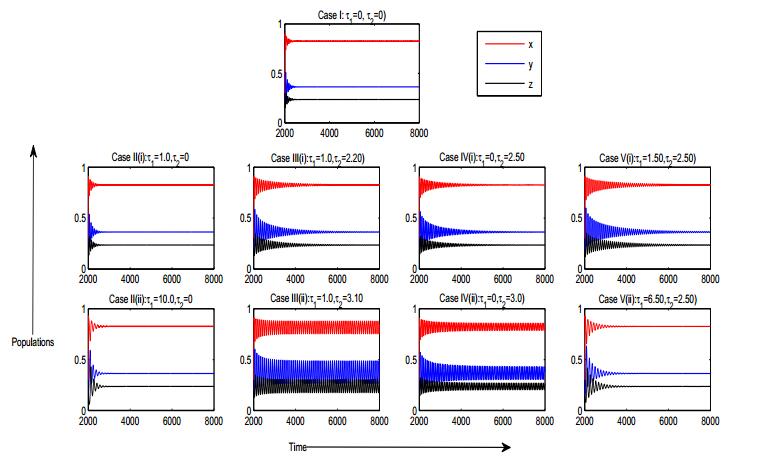
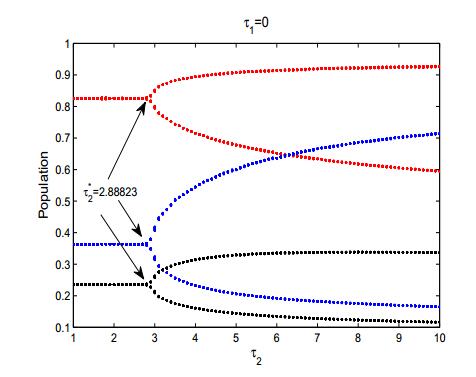
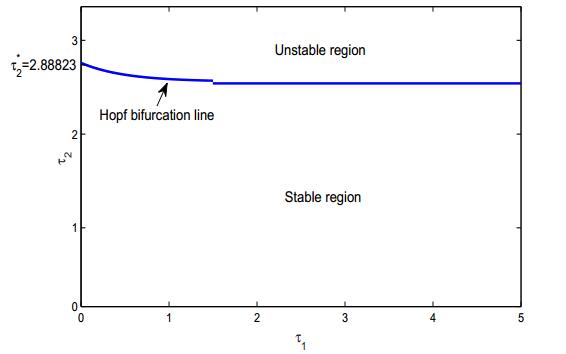
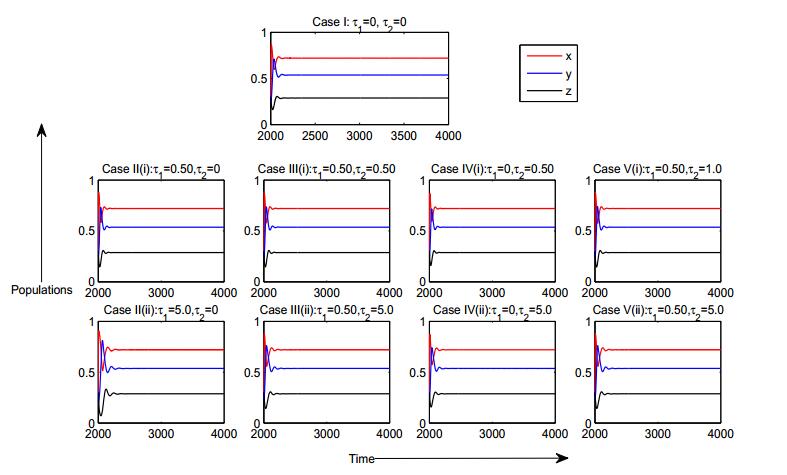
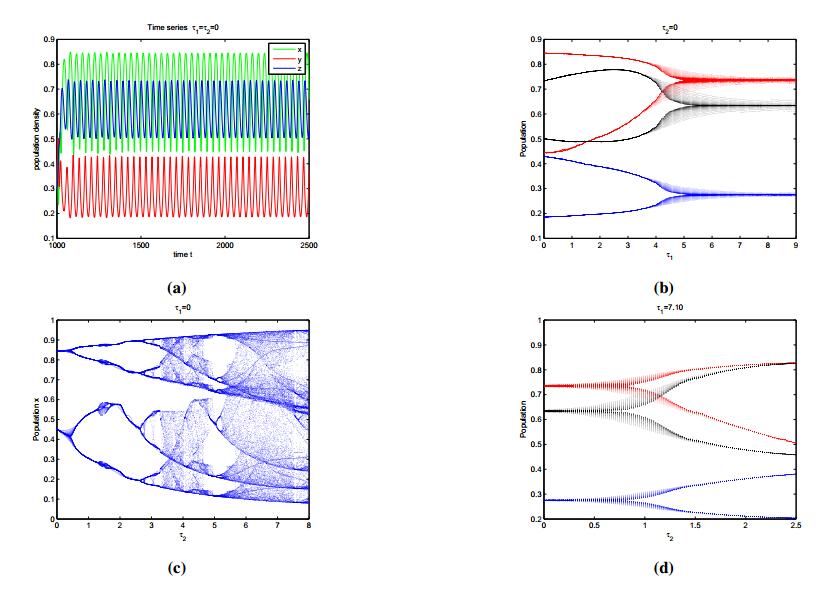
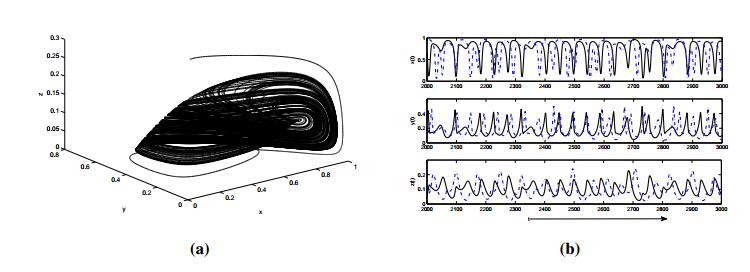
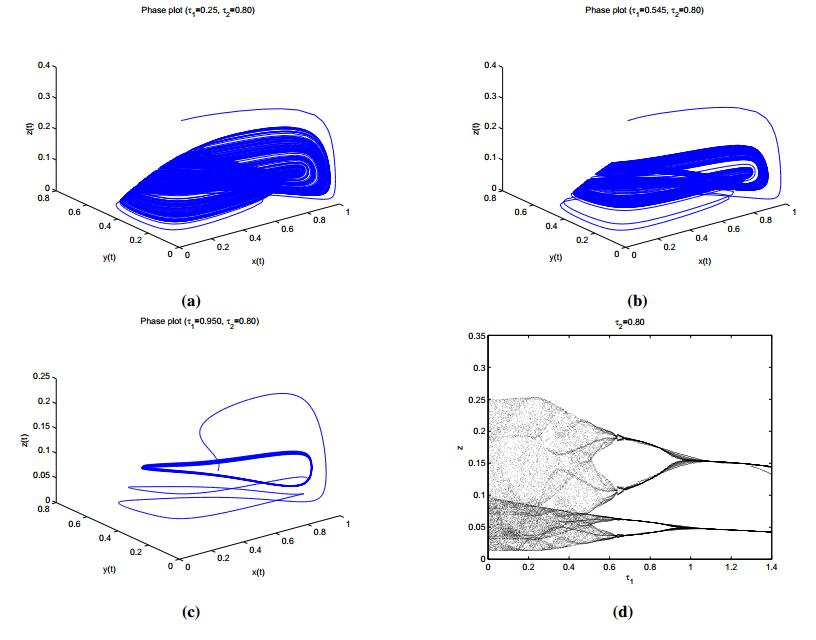
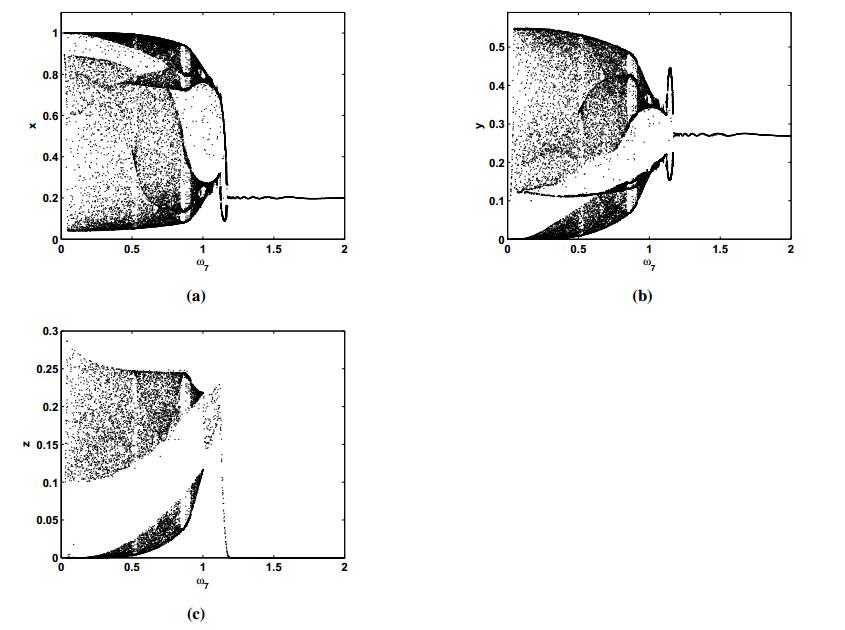


 DownLoad:
DownLoad: